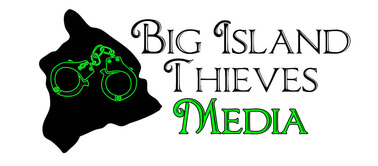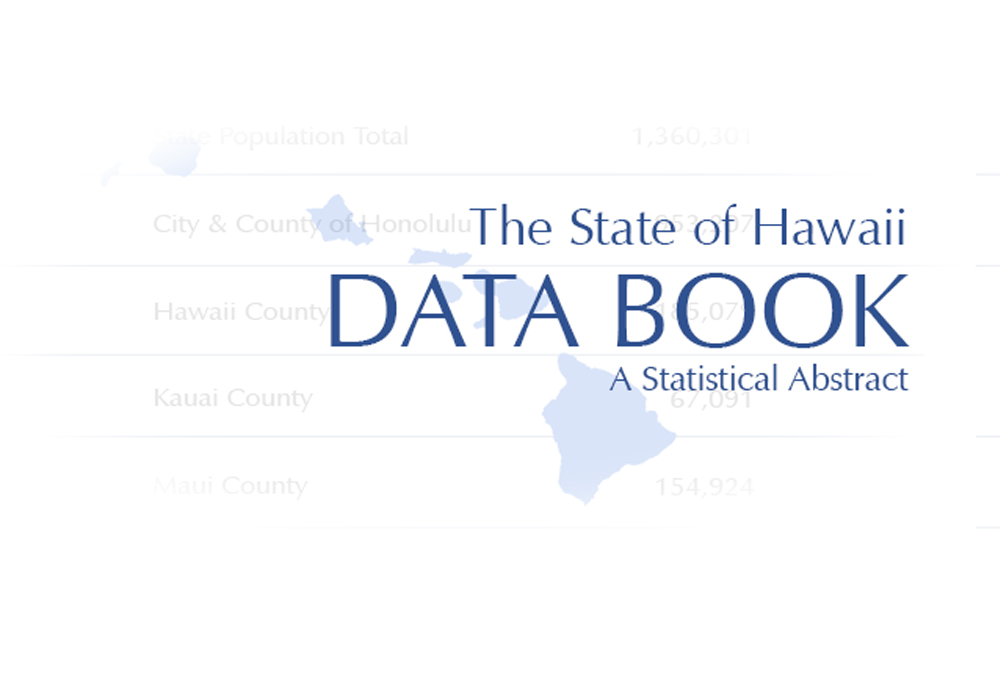The Department of Business, Economic Development and Tourism(DBEDT) today released the 2021 edition of the “State of Hawai‘i Data Book.”
The book is in electronic form and is available on the DBEDT website at: dbedt.hawaii.gov/economic/databook. The data may be downloaded in whole or in part as either PDF or Excel files.
The Hawai‘i State Data Book is the most comprehensive statistical book about Hawai‘i in a single compilation. Classified into 24 sections with 850 data tables, it covers a broad range of information in areas such as population, education, environment, economics, energy, real estate, construction, business enterprises, government, tourism, and transportation.
“The Data Book provides detailed information on all aspects of our state. Along with historical trends, readers can find how COVID-19 impacted our lives and the economy in the past two years and the progress of the recovery,” said DBEDT Director Mike McCartney. “The Data Book is one of the popular data products produced by DBEDT and has over 50 years of history.”
Added State Economist Dr. Eugene Tian, “Our researchers have worked hard to include all the data available as of July 2022. Many of the data points are available only in the Data Book since they are either produced by DBEDT researchers or specially tabulated for the Data Book by other entities.”
Some interesting data in this newest edition include:
- In 2021, Hawai‘i’s de facto population was 1,559,442, which was a 4.5% decrease from 2019, before the COVID-19 pandemic, but a 4.6% increase from 2020, during which there were COVID-19 related travel restrictions to the islands. The de facto population includes all people in the state, including visitors and excluding residents temporarily absent. (Table 1.04)
- There were 273 state hospital beds for the 2021 fiscal year. This was the first increase in licensed hospital beds since 2008. Between 2008 and 2020, there were 202 hospital beds. (Table 2.31)
- As of February 2022, there were 11,427 physicians and surgeons licensed in Hawai‘i, a 6.9% increase from February 2021; however, there were 27,620 registered nurses licensed in Hawai‘i in 2022, a 3.8% decrease from 2021. (Table 2.35)
- There were 18,493 marriages performed in 2021. About 60% of marriages were people who came to Hawai‘i to get married. (Table 2.40)
- In 2021, federal funds given to Hawai‘i public schools was $1.1 billion, an increase of 286% compared to the $277 million in 2020. (Table 3.11)
- Public school enrollment during the 2021-2022 school year was 173,178, a 1.8% decrease from the prior school year. (Table 3.13)
- There were 838 Chapter 7 bankruptcy cases in 2021. This was the lowest number of cases since 2006. Chapter 7 of the Bankruptcy Code provides for liquidation, or the sale of a debtor’s non-exempt property, and applies to both businesses and individuals. (Table 4.18)
- About 67.7 billion gallons of water was consumed in the state in 2021, which is 4.6% less than the 70.9 billion gallons of water consumed in 2020. (Table 5.25)
- The Hawai‘i Audubon Society saw 10 more visiting bird species, totaling 857 visitors in 2021 compared to 312 in 2020. There were also 2,224 indigenous bird sightings in 2021, whereas only 108 were sighted in 2020. (Table 5.58)
- Honolulu Zoo had a decreased attendance in 2021 from 387,103 patrons in 2020 to 341,469 in 2021, an 11.8% decline in attendance. (Table 7.44)
- The Honolulu Marathon returned for 2021 after being postponed because of the COVID-19 pandemic in 2020. Registration for the Honolulu Marathon decreased to 11,385 in 2021 from 23,882 in 2019, and only a little over half of this year’s registrants (6,241) finished the race. (Table 7.55)
- As of March 2021, there were 64,181 state government full- and part-time employees with 43,529 in education (elementary, secondary, higher, and other but excluding libraries). Education accounted for 67.8% of the employees but 62.2% of the payroll. (Table 9.66)
- The U.S. Department of Defense’s budget for Hawai‘i military construction shows a total obligated authority of $650.2 million for FY2023, a 42.4% increase from FY2022, largely due to a $621.2 million Navy project for dry dock replacement at Joint Base Pearl Harbor-Hickam. (Table 10.12)
- In 2021, the average number of monthly cases served by the food stamp program (otherwise known as Supplemental Nutrition Assistance Program [SNAP]) increased 23.8% from 2020, exceeding a hundred thousand for the first time ever at 103,256. (Table 11.03)
- The total household debt per capita in Hawai‘i in 2021 was $77,410 which ranked 3rd highest among the 50 states, exceeded only by California and Colorado. The U.S. average in 2021 was $55,480. Among the components, Hawai‘i held $3,750 in credit card and $60,600 in mortgage debt per capita for a ranking of 2nd and 3rd highest, respectively. (Table 13.45)
- CNBC’s ‘Top States for Business’ feature in 2022 ranked Hawai‘i at 46, which was an improvement over the 2021 ranking of 49th. ‘Cost of living’ and ‘Cost of doing business’ ranked 50 in both years but Hawai‘i’s ‘Life, health, and inclusion’ ranked 3rd in 2022 and 2nd in 2021. (Table 14.13)
- The annual “Worldwide Cost of Living Survey” conducted in March 2022 by Mercer LLC ranked Honolulu 20th most expensive among more than 400 cities worldwide. In 2021, Honolulu was ranked 43rd. (Table 14.23)
- The University of Hawai‘i in 2021 received $35.1 million more in research and non-research funding and received 84 more funding awards than they did in 2020. (Table 17.22)
- Because of the COVID-19 pandemic, the ridership on Honolulu’s bus system has decreased 22.4% from 62.5 million passengers in 2019 to 48.5 million passengers in 2020. In 2021, the ridership further sunk to 27.8 million passengers, which was only 40% of the 2010-2019 average of 68.8 million passengers per year. (Table 18.27)
- Out shipment of seeds for seed crops decreased by 11.4% from 3.6 million pounds of seeds in 2020 to 3.2 million pounds of seeds in 2021. (Table 19.12)
- In 2021, local home buyers bought the most homes at 19,696, mainland buyers accounted for 5,806 homes, and foreign buyers the least at 468. Foreign home buyers paid the most on average at $1,241,943, mainland buyers followed at $1,199,098, and local buyers paid the least at $737,197. (Table 21.38)
- For the 2021 contract year ending May 31, DFS (duty-free stores) Hawai‘i generated $10,909 in revenue. In the 2019 contract year, prior to the COVID-19 pandemic, there was $105,462,229 in DFS Hawai‘irevenues. (Table 23.09)
- The average daily room rate for visitor accommodations was $328.68 in 2021. This was an increase of $61.87 per day from 2020 and an increase of $45.63 per day from 2019. (Table 23.37)
- In 2021, Hawai‘i ‘s commodity exports totaled $339.8 million, up from $319.8 million in 2020 but down from $460.0 million in 2019. Hawai‘i ‘s commodity imports in the same year totaled $2,553.5 million, up from $1,911.7 million in 2020 but still considerably lower than $3,780.6 million in 2019. (Table 24.05 and 24.06)

